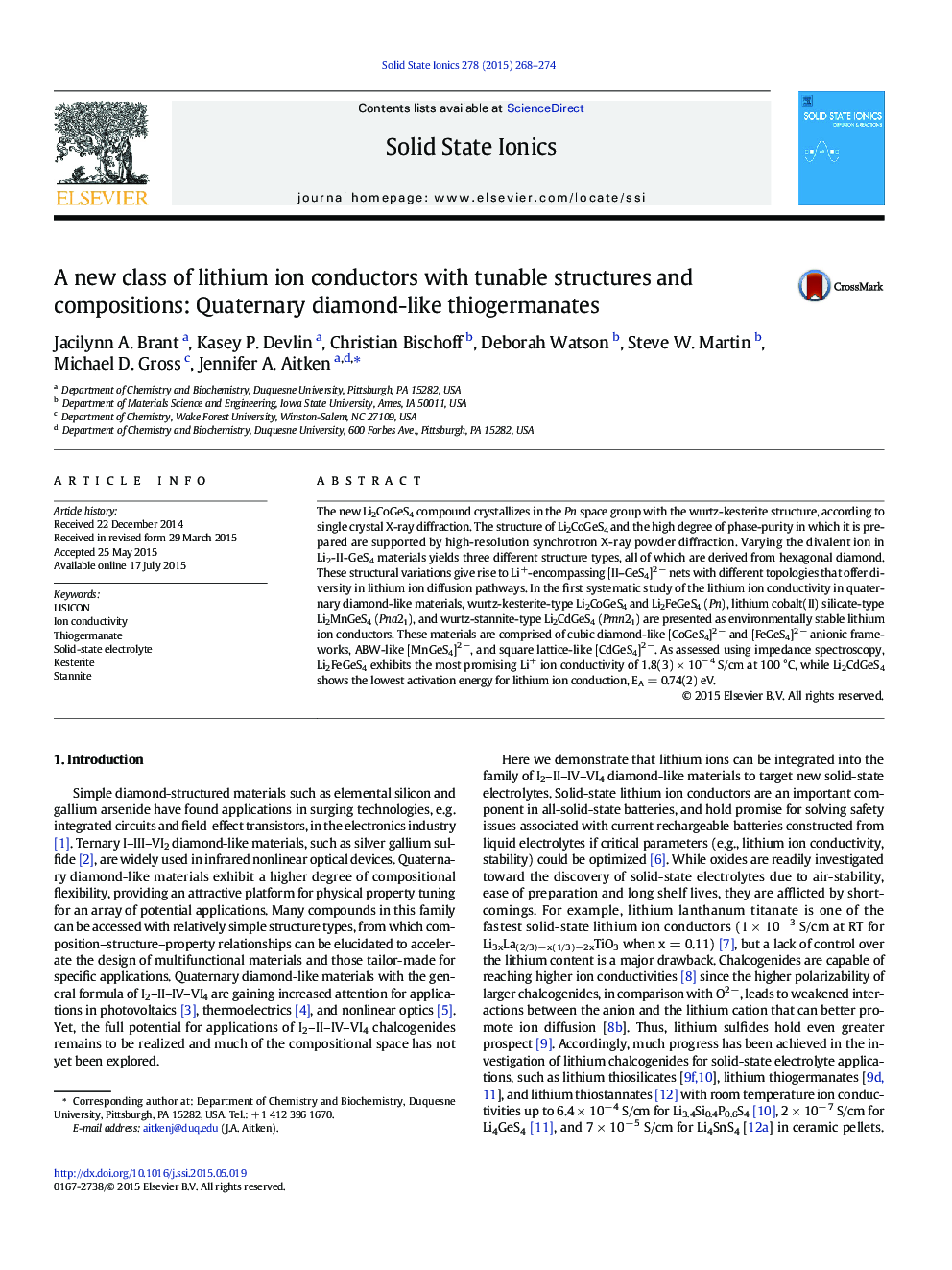| Article ID | Journal | Published Year | Pages | File Type |
|---|---|---|---|---|
| 1295728 | Solid State Ionics | 2015 | 7 Pages |
•Varying the II ion in the Li2–II–GeS4 formula yields three different structure types.•Li2CoGeS4 crystallizes in the Pn space group with the wurtz-kesterite structure.•Li2MnGeS4 possesses a zeolite ABW-like [MnGeS4]2 − anionic framework.•Li2FeGeS4 exhibits a Li+ ion conductivity of 1.8(3) × 10− 4 S/cm at 100 °C.•Li2CdGeS4 shows the lowest activation energy for Li+ ion conduction, EA = 0.74(2) eV.
The new Li2CoGeS4 compound crystallizes in the Pn space group with the wurtz-kesterite structure, according to single crystal X-ray diffraction. The structure of Li2CoGeS4 and the high degree of phase-purity in which it is prepared are supported by high-resolution synchrotron X-ray powder diffraction. Varying the divalent ion in Li2-II-GeS4 materials yields three different structure types, all of which are derived from hexagonal diamond. These structural variations give rise to Li+-encompassing [II–GeS4]2 − nets with different topologies that offer diversity in lithium ion diffusion pathways. In the first systematic study of the lithium ion conductivity in quaternary diamond-like materials, wurtz-kesterite-type Li2CoGeS4 and Li2FeGeS4 (Pn), lithium cobalt(II) silicate-type Li2MnGeS4 (Pna21), and wurtz-stannite-type Li2CdGeS4 (Pmn21) are presented as environmentally stable lithium ion conductors. These materials are comprised of cubic diamond-like [CoGeS4]2 − and [FeGeS4]2 − anionic frameworks, ABW-like [MnGeS4]2 −, and square lattice-like [CdGeS4]2 −. As assessed using impedance spectroscopy, Li2FeGeS4 exhibits the most promising Li+ ion conductivity of 1.8(3) × 10− 4 S/cm at 100 °C, while Li2CdGeS4 shows the lowest activation energy for lithium ion conduction, EA = 0.74(2) eV.
